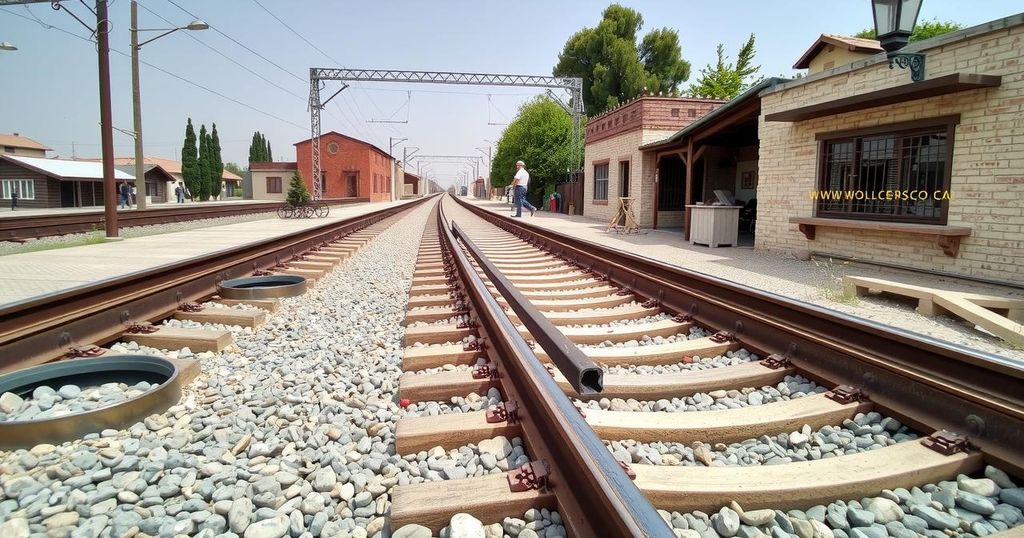World news
ABDULHAMID II, ABDULKA, ABDULKADIR URALOGLU, ANATOLIAN BROADCASTERS ASSOCIATION, ASIA, BASHA, BASHAR AL - ASSAD, DAMASCUS, DISPATCH, FIGHTER JETS, IRAQ, MEDINA, MIDDLE EAST, MILITARY OPERATIONS, NORTH AMERICA, PALESTINE, REC, REFUGEE CRISIS, SAUDI ARABIA, SYRIA, SYRIAN CONFLICT, TAYYIP ERDOGAN, UNITED STATES, URALOGLU, WAR
Stella Nguyen
0 Comments
Turkey Initiates Restoration of Historic Hejaz Railway in Syria
Turkey is set to restore segments of the historic Hejaz Railway in Syria to reestablish rail connections to Damascus, as part of its rebuilding efforts following the Syrian civil war. Turkish officials have noted the challenges posed by infrastructure neglect and theft, but view the project as essential for regional connectivity and economic recovery.
Turkey has announced plans to restore sections of the historic Hejaz Railway within Syria, with efforts aimed at reconnecting Turkish rail lines to the capital city of Damascus. Turkish Transportation Minister Abdulkadir Uraloglu emphasized the urgency of the project during a meeting with journalists in Ankara, highlighting the need to evaluate the current state of the railway and initiate restoration. This initiative is part of Turkey’s broader strategy to assist in the rebuilding of Syria following 13 years of civil conflict.
The Hejaz Railway, a grand vision of Ottoman Sultan Abdulhamid II in 1900, originally aimed to link Istanbul with Mecca, facilitating pilgrimages to the holy city and enhancing Ottoman control over its provinces. The railway, which connected Istanbul to Medina, was constructed rapidly with funding from Muslim donations, though some were coerced. Despite its ambition, the project was frequently undermined by sabotage during the Arab Revolt and ultimately fell short of reaching its intended destination of Mecca, ending approximately 400 kilometers later in Medina. Now, with a caretaker government in place in Damascus after the ouster of President Bashar al-Assad, efforts to refurbish the railway align with President Recep Tayyip Erdogan’s initiative to assess and address Syrian infrastructure deficiencies.
The crucial railway line has not operated for an extended period and the minister noted that while there is foundational infrastructure, challenges remain due to theft, as experienced in Iraq with abandoned railway lines being repurposed for raw materials. The restoration of portions of this historic railway is being regarded as an essential step in the reconstruction of Syrian infrastructure. By resurrecting this transportation link, Turkey aims to enhance regional connectivity and create a conducive environment for economic revitalization post-conflict.
The Hejaz Railway is a historically significant rail line originally constructed by the Ottoman Empire to improve access to the holy cities of Mecca and Medina and to consolidate control over its remote regions. Construction began in 1900 under Sultan Abdulhamid II and was funded largely through Muslim donations. The railway was marred by sabotage during World War I, particularly during the Arab Revolt, which aimed to assert Arab nationalism against Ottoman rule. After the war, the railway functioned sporadically and never fully realized its ultimate purpose of connecting to Mecca. Turkey’s current initiative to restore parts of it is interwoven with broader efforts to support Syria’s reconstruction in the aftermath of a protracted civil war.
In conclusion, Turkey’s initiative to restore parts of the Hejaz Railway reflects a strategic move to enhance transportation connectivity between Turkey and Syria, addressing infrastructural deficits in the latter following years of conflict. This historic railway, once a symbol of Ottoman ambition, represents not only a transportation route but also a cultural and historical linkage between the two nations. The successful restoration could bolster trade and foster regional cooperation in the future.
Original Source: www.middleeasteye.net




Post Comment